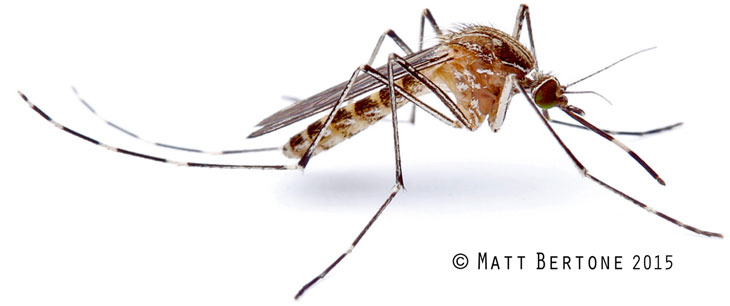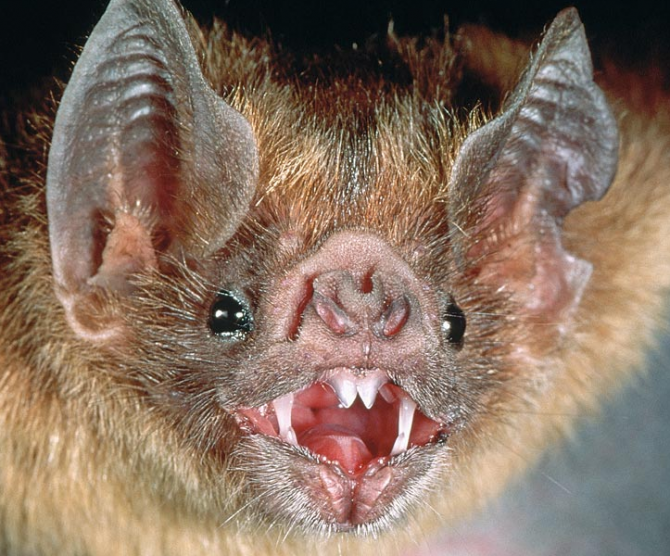10 Vampires of the Animal Kingdom

You’ve probably heard of Dracula and other famous fictional vampires, but did you know that there are real-life vampires that can be found in the animal kingdom? Comprised of a rich array of flora and fauna, there are a few members of the animal kingdom that practice hematophagy, which basically means they consume blood for one reason or another.
While some organisms consume blood to survive, others include the nutrient-dense fluid as part of their balanced diet. However, a few animals acquired the vampire name because they are fearsome predators, or they just looked scary. In light of this, here are 10 real life blood suckers that can be found across the globe.
1. Oxpecker Birds
The oxpecker can be found in the open grasslands of Sub-Saharan Africa. It is a bird that can reach 3.54-inches (9 cm) in length and weigh up to 70 grams. It mostly perches on mammals like buffaloes and other cattle to remove ticks, maggots and flies from their hides. While this may look like a symbiotic relationship, the bird’s intention is only to feed itself. It often takes advantage of the host animal, reopening healing wounds and creating new ones so as to drink its blood.
2. Vampire Squid
The vampire squid is a small marine creature that belongs to the cephalopod group of animals. It’s found in the depths of tropical and temperate oceans and can reach maximum lengths of 11.81-inches (30 cm). Normally, vampire squids don’t prey on live animals but feed on detritus of dead planktons or fecal pellets found near the ocean floor. The vampire name comes from its glowing eye spots and its dark red body which give it a fearsome look.
3. Amazon Giant Leeches
The Amazon giant leech can be found in the coastal wetland marshes of South America. It’s one of the biggest species of leeches worldwide and can grow up to 18-inches (45.72 cm) long and 4-inches (10.16 cm) wide. This creature sucks and obtains blood as food and also as a source of nourishment. While young leeches mostly parasitize fish, frogs and lizards, adult leeches attack caimans, anacondas and cattle. In fact, some can even attack humans if they get the chance.
4. Sea Lampreys
Inhabiting the depths of the Atlantic Ocean are the sea lampreys, creatures that have remained largely unchanged for many years. They are a parasitic species of fish that can grow to lengths of up to 47.24 inches (119.99 cm) and weights of up to 2.5 kg. A Sea Lamprey doesn’t attack humans but mostly sucks blood and other bodily fluids from other fish. It usually attaches to its host with its mouth and using its sharp teeth, it tears the flesh before accessing the blood.
5. Mosquitoes
Mosquitoes are the most common human blood-suckers and among the deadliest on the planet. They mostly inhabit forests and marshes of warm and temperate regions across the world. An adult mosquito is relatively small and can grow to about 0.4 inches (1.02 cm) long. Not all of them are vampires though since it’s only the female anopheles type that drinks human blood for purposes of egg production. Consequently, it can transmit serious diseases such as malaria and dengue.

6. Assassin Bugs
This is a predatory insect that is often found in open fields and shrubs in North America. It is mostly used by farmers to control harmful pests like aphids, leafhoppers, beetles and caterpillars. Assassin Bugs are very patient hunters often stalking their prey before attacking with their sharp, piercing beaks. Although they don’t parasitize humans, large species may bite if they get a chance. An adult assassin bug can grow up to 1-inch (2.54 cm) in length.
7. Bedbugs
Bedbugs are human blood-sucking insects that can be found in almost all regions of the world. They are about 0.27 inches (0.69 cm) long and mostly inhabit small cracks and crevices of beds, mattresses, box springs and other dark areas. Often referred to as the perfect parasites, bed bugs mostly feed at night when their hosts are sound asleep. Although their bites are painless, they can lead to several health impacts like skin rashes, allergic symptoms and psychological effects.
8. Cooper’s Nutmeg
This is a type of marine snail that inhabits the offshore sandy substrates of the Pacific Ocean. It is among the largest predatory snail species in the world growing up to a length of 4.4 inches (11.18 cm). The Cooper’s Nutmeg is a highly specialized vampire that sucks blood from a specific fish species known as the Pacific Electric Ray. Mostly buried in the sand, it only appears when it senses its prey, attacks using its elongated proboscis, and begins sucking blood.
9. Ticks
Ticks are external parasites that live by sucking the blood of both cold-blooded and warm-blooded animals. They are mostly found in grassy and wooded areas where their hosts usually live and roam. Although tick bites are harmless to humans, they can transmit harmful microorganisms that cause illnesses such as Lyme disease and Rocky Mountain spotted fever. An adult tick can grow up to a maximum length of 0.2 inches (0.51 cm).
10. Vampire Bats
Vampire bats have long been portrayed in horror films as blood-thirsty creatures. Additionally, they are the inspiration behind online casino games such as the Bloodsuckers slot. However, unbeknown to many, only three types of bats among the 1,000+ species inhabiting earth exclusively feed on blood. Furthermore, they don’t attack humans but prefer unsuspecting livestock such as goats and cows. Mostly found in South and Central America, vampire bats can grow up to a maximum of 3.54 inches (8.99 cm) in length.
The act of sucking blood for sustenance, otherwise known as hematophagy, is a habitual practice in the kingdom of animals. After all, this red body fluid has proteins and other nutrients and besides, it is very easy to find. That’s why vampire creatures are sinking their sharp teeth into any blood host that appeals to them.
The aforementioned are some of the vampires in the animal kingdom. Others include the vampire finch, musk deer, vampire frogs, kissing bugs, the hood mockingbird and vampire squirrels. While some of these creatures obtain blood from specific hosts, others parasitize and prey on a wide variety of animals.


































































































